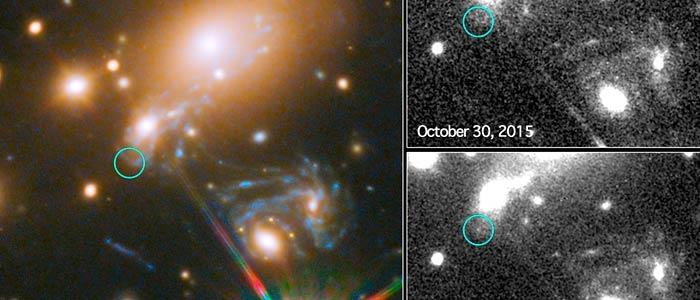The Hubble Space Telescope captured the first image ever of a predicted supernova explosion, marking an accomplishment for astronomers involved in the project.
The project, a collaboration between NASA and the European Space Agency, started in November 2014 when scientists spotted four separate images of the Refsdal supernova around the galaxy.
The optical illusion was due to the mass of a single galaxy within the cluster warping and magnifying the light from the distant stellar explosion in a process known as gravitational lensing, according to the astronomers.


“While studying the supernova, we realized that the galaxy in which it exploded is already known to be a galaxy that is being lensed by the cluster,” explained Steve Rodney from the University of South Carolina, one of the leaders in the supernova image project. “The supernova’s host galaxy appears to us in at least three distinct images caused by the warping mass of the galaxy cluster.”
The astronomers were able to use the images to predict the reappearance of the supernova, and on December 11 they were proved correct.
“Hubble has showcased the modern scientific method at its best,” said Patrick Kelly, lead author of the discovery and re-appearance papers and co-author of the modelling comparison paper from the University of California Berkeley, in the announcement. “Testing predictions through observations provides powerful means of improving our understanding of the cosmos.”






Friends Read Free